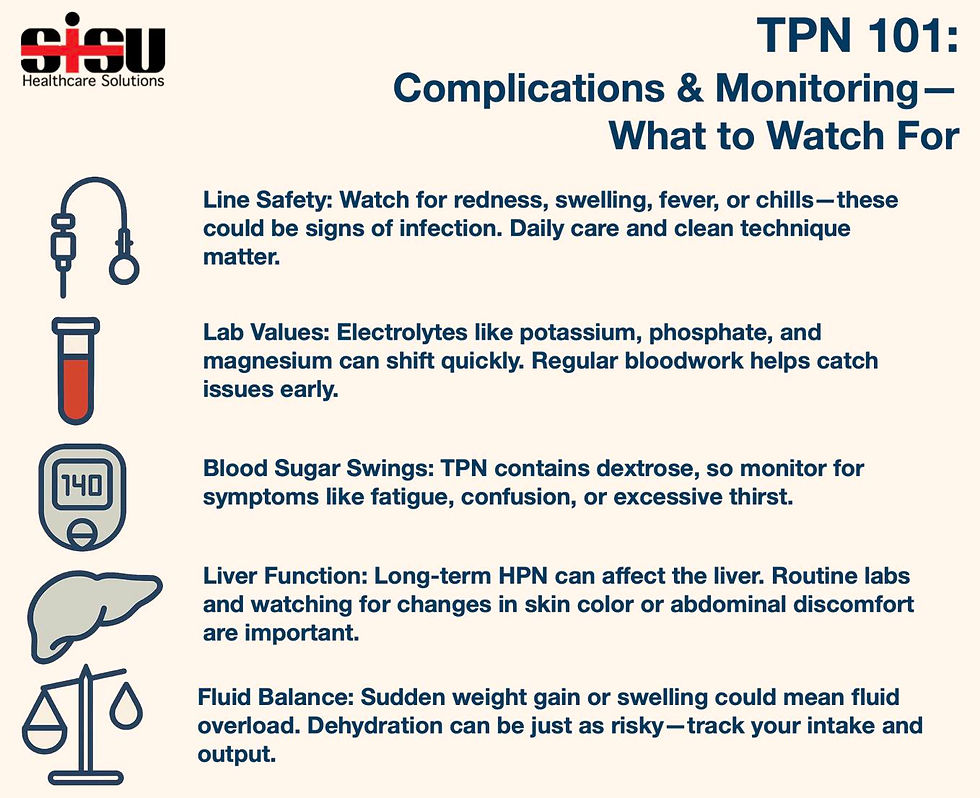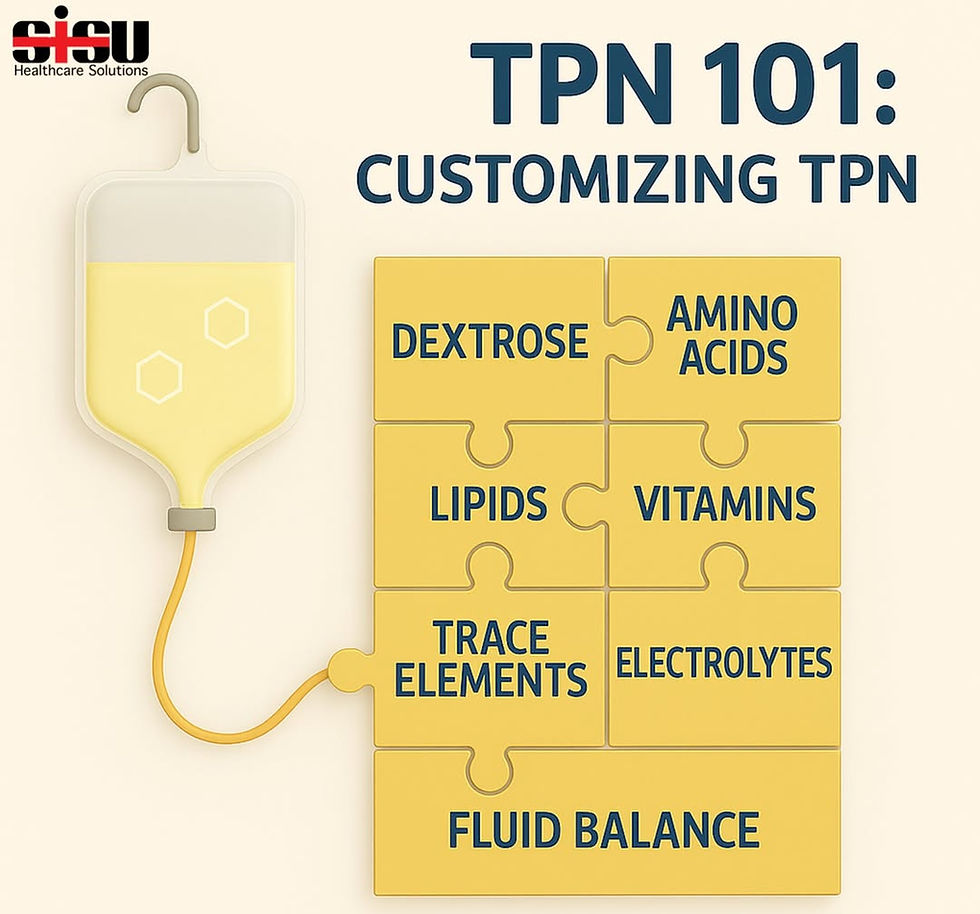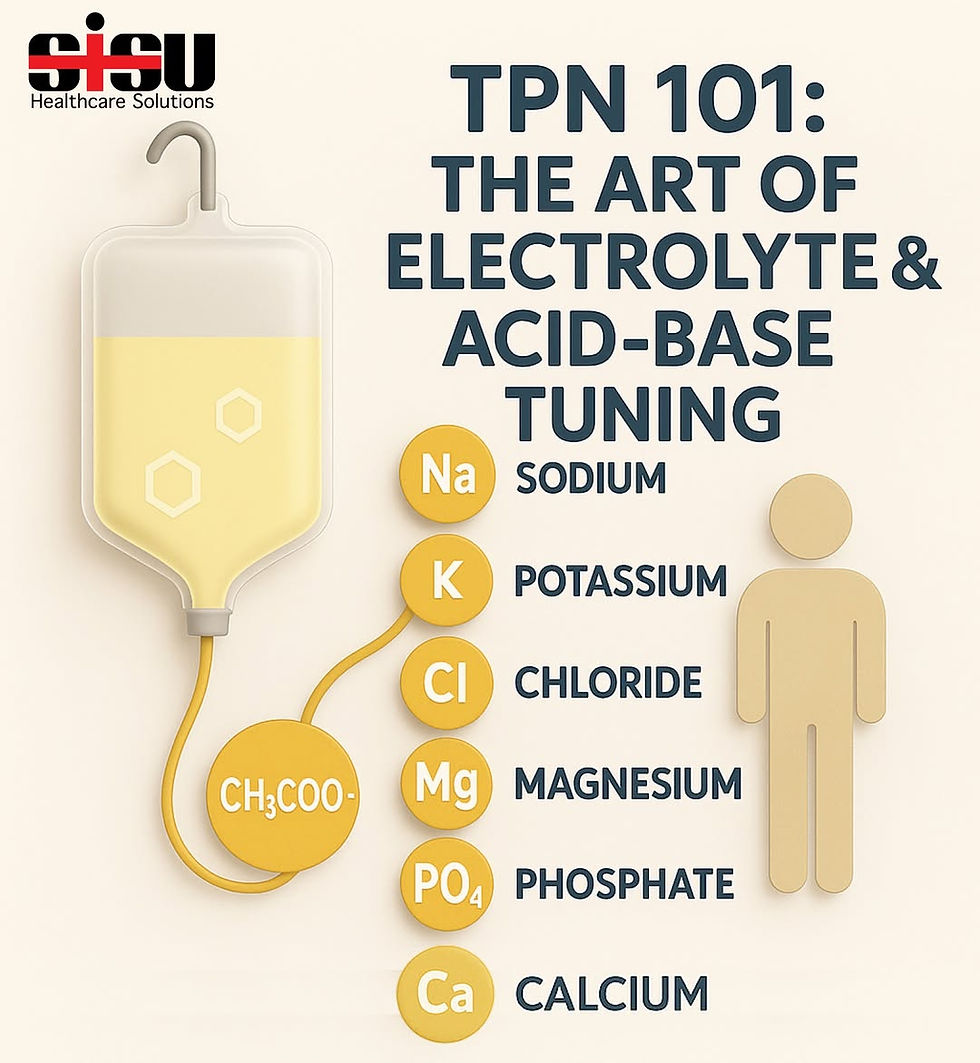TPN 101: Complications and Monitoring - What to Watch For
- ckhendry7
- Aug 12
- 1 min read

Managing Parenteral Nutrition at home is a big step—it offers independence, but also comes with responsibilities. Whether you're a patient, caregiver, or clinician, staying ahead of potential complications is key to keeping HPN safe and effective.
Here’s what to keep an eye on:
Line Safety: Your central line is your lifeline. Watch for redness, swelling, fever, or chills—these could be signs of infection. Daily care and clean technique matter.
Lab Values: Electrolytes like potassium, phosphate, and magnesium can shift quickly. Regular bloodwork helps catch issues early.
Blood Sugar Swings: TPN contains dextrose, so monitor for symptoms like fatigue, confusion, or excessive thirst.
Liver Function: Long-term HPN can affect the liver. Routine labs and watching for changes in skin color or abdominal discomfort are important.
Fluid Balance: Sudden weight gain or swelling could mean fluid overload. Dehydration can be just as risky—track your intake and output.



Comments